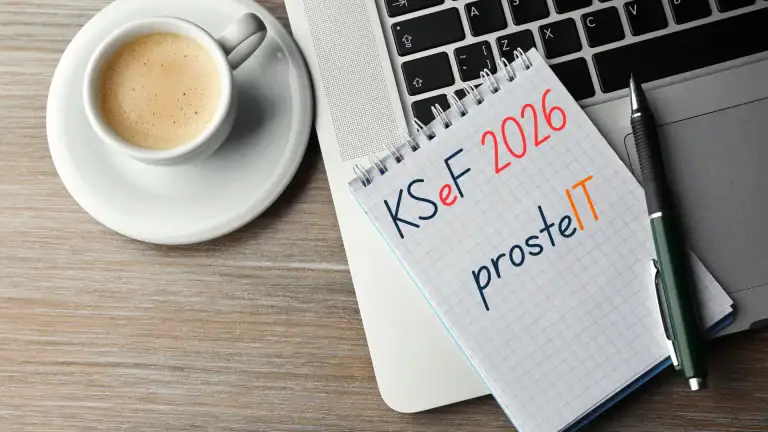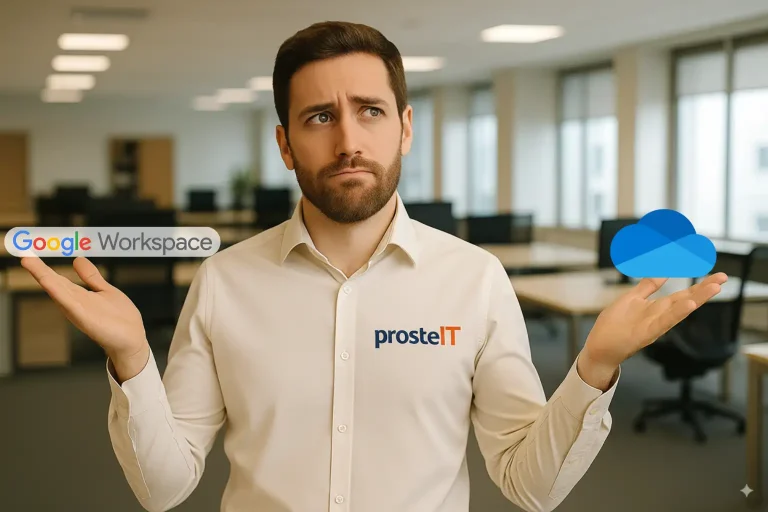In the digital age, where communication takes place mainly via mobile applications, the security of voice calls becomes a key issue. Many people, both in their private and professional lives, use instant messengers such as Microsoft Teams, Signal, WhatsApp or Telegram without realizing the potential risks associated with their use.
In this article, we will take a look at the most popular voice messengers, analyzing their security mechanisms, such as end-to-end encryption (E2EE), TLS or SRTP protocols, and two-factor authentication (MFA) features. We will explain how these technologies work and what they mean for protecting your privacy.
We will also compare how individual apps deal with threats such as man-in-the-middle attacks, account takeovers, and data leaks. We will pay special attention to Microsoft Teams, analyzing why it may be a safer choice for businesses compared to other messaging apps.
In addition, we will discuss the case of Skype, which was once a leader in voice communications but is now losing its importance. We'll take a look at the reasons behind this decline in popularity and consider what conclusions can be drawn from it.
This article aims not only to provide technical knowledge but also to raise awareness about the importance of security in voice communications. We encourage everyone to read it if they want to better understand how to protect their conversations from unwanted access and what tools can help with that.
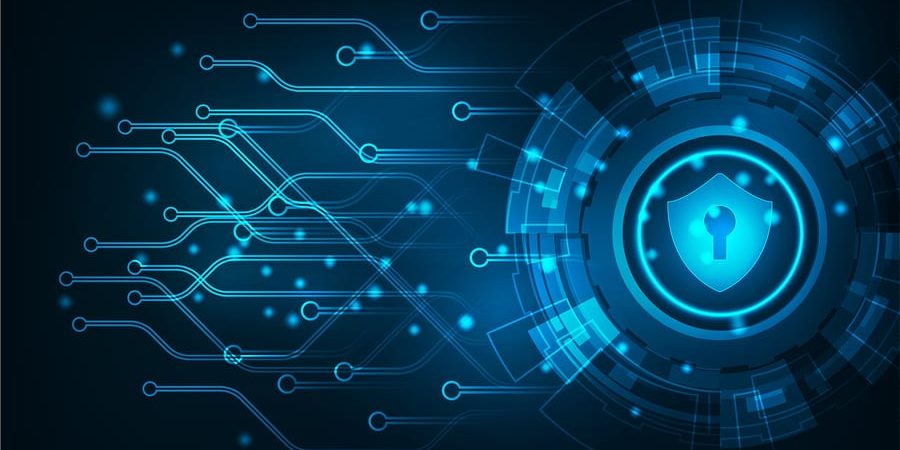
Overview of the most popular voice messengers
Microsoft Teams (US)
Microsoft Teams is a communication and collaboration platform created by the American company Microsoft, headquartered in Redmond, Washington. It was officially launched in 2017 as part of the Microsoft 365 suite, offering chat, video conferencing, file storage, and integration with other applications Microsoft. Thanks to this, it has become a popular tool in corporate environments, supporting teamwork and real-time communication.
Signal (USA)
Signal(Signal Foundation) is a secure messaging app known for its strong focus on user privacy. It was created by Moxie Marlinspike and Brian Acton, the co-founder of WhatsApp who left Facebook due to concerns about the privacy of user data. Signal offers end-to-end encryption for text messages, voice calls, and video calls, and minimizes the storage of metadata. It is an open-source app, funded by donations, which allows it to avoid commercial pressures and advertising.
Discord (USA)
Discord was initially created for the gaming community by the American company Discord Inc., headquartered in San Francisco. Over time, however, it has evolved into a universal communication platform used by various communities, from educational to hobbyist. The application allows the creation of servers with thematic channels, offering both voice and video calls.
Messenger (USA)
Messenger, formerly known as Facebook Messenger, is an application created by the American company Meta Platforms (formerly Facebook Inc.), headquartered in Menlo Park, California. It was initially an integral part of Facebook, but in 2011 it was spun off as a separate application. Messenger allows sending text messages, voice and video calls, and sharing multimedia.
WhatsApp (US)
WhatsApp was founded in 2009 by Brian Acton and Jan Koum, both former Yahoo! employees, in Mountain View, California. The app quickly gained popularity due to its simplicity and lack of advertising. In 2014, it was acquired by Facebook (now Meta Platforms). WhatsApp offers end-to-end encryption for messages and calls, which provides a high level of privacy.
Telegram (UAE)
Telegram (Telegram FZ-LLC) is a messaging application founded in 2013 by Russian entrepreneurs Pavel and Nikolai Durov. The company is currently headquartered in Dubai, United Arab Emirates. Telegram offers end-to-end encryption in so-called "secret chats", while standard conversations are encrypted in a client-server model. The application is known for its high personalization capabilities and support for large user groups.
Each of these apps has its own unique features and approach to security and privacy. In the following sections of this article, we will take a closer look at their security mechanisms to help users make an informed choice about which tool best suits their needs.
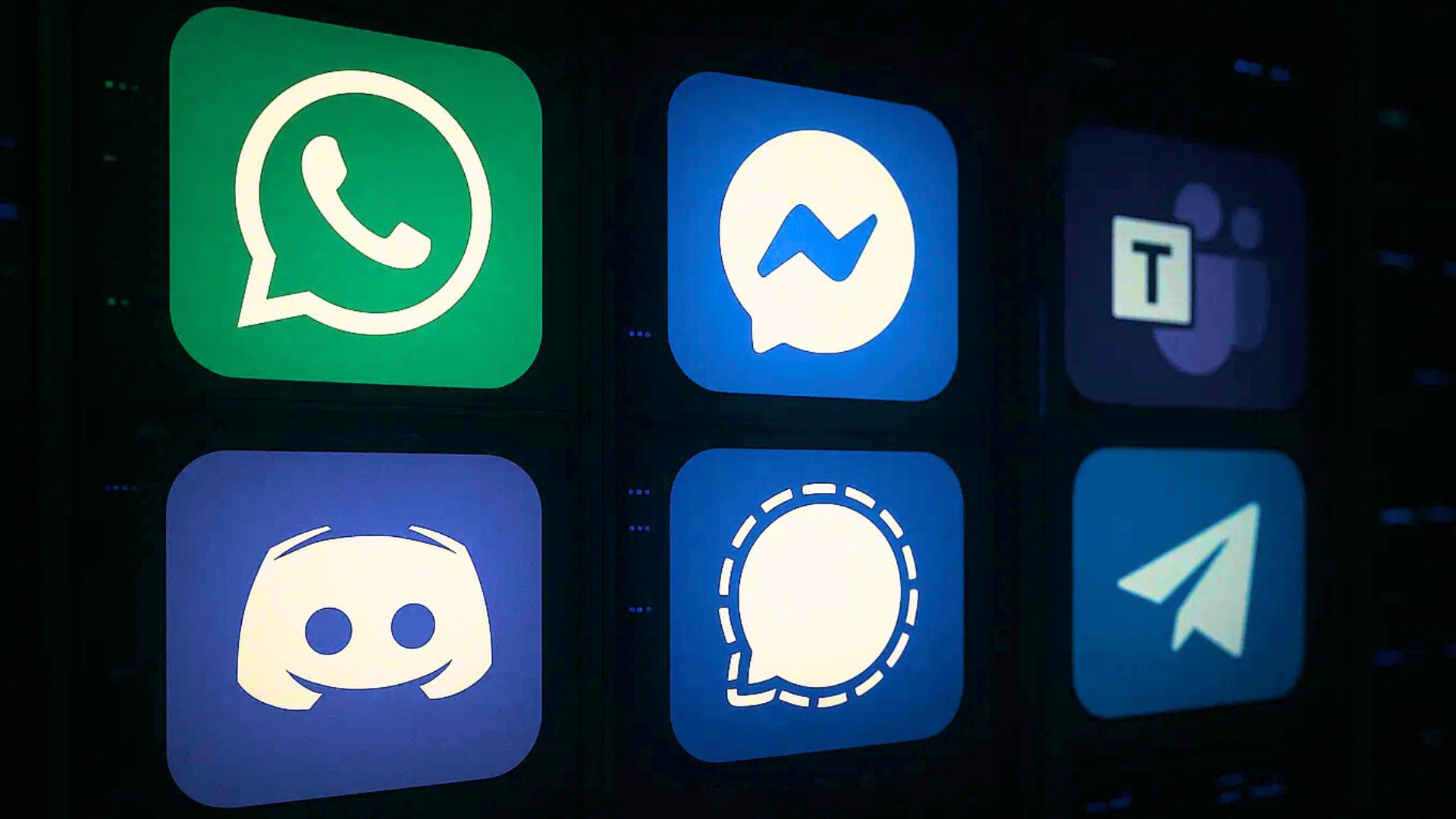
Comparison of technical aspects of security
In the world of digital communication, the security of data sent via voice messengers is crucial. In this section, we will look at the technical aspects of security used in popular applications such as Microsoft Teams, Signal, WhatsApp, Telegram, Messenger, and Discord.
Transport Layer Security (TLS) – Secure data transmission
Transport Layer Security (TLS) is a cryptographic protocol that ensures the confidentiality and integrity of data sent over a network. It operates between the application layer and the transport layer, encrypting data before transmission and decrypting it upon receipt. TLS It is widely used in Internet applications such as browsers, email, instant messaging, and VoIP.
TLS 1.3, released in 2018, offers improved security and performance over earlier versions. It removes outdated algorithms and reduces the time it takes to establish a secure connection.
Most messaging applications, including Microsoft Teams, WhatsApp, Telegram, Messenger, and Discord, use TLS to secure data transmission between the client and the server.
Secure Real-time Transport Protocol (SRTP) – Voice and video transmission protection
Secure Real-time Transport Protocol (SRTP) is an extension of the RTP protocol, designed to secure real-time multimedia transmissions such as voice and video calls. SRTP provides data encryption, message authentication, and protection against replay attacks.
Microsoft Teams uses SRTP to secure multimedia transmissions, which ensures confidentiality and data integrity during calls. Other applications, such as Discord, also use SRTP in their voice calls.
Multi-Factor Authentication (MFA) – Multi-factor authentication
Multi-Factor Authentication (MFA) is an authentication method that requires a user to provide two or more factors to confirm their identity. These factors may include:
• Something the user knows (e.g. password)
• Something he owns (e.g. a mobile phone)
• Something that it is (e.g. a fingerprint)
Using MFA significantly increases the security of accounts because even if one factor is compromised, an attacker will not be able to gain access without the others.
Microsoft Teams integrates with Azure Active Directory to offer advanced MFA options, including mobile app authentication and biometrics. WhatsApp offers two-step verification with a PIN, and Telegram lets you set a secondary password as a second authentication factor.
Comparison of security features in popular messengers
| App | TLS | SRTP | MFA |
|---|---|---|---|
| Microsoft Teams | ✅ | ✅ | ✅ |
| Signal | ✅ | ✅ | ❌ |
| ✅ | ✅ | ✅ | |
| Telegram | ✅ | ❌ | ✅ |
| Messenger | ✅ | ❌ | ❌ |
| Discord | ✅ | ✅ | ✅ |
From the above list, Microsoft Teams offers comprehensive security, combining TLS, SRTP, and advanced MFA options. Signal and WhatsApp also provide high levels of security, although Signal does not offer native MFA. Telegram and Messenger have limited support for SRTP and MFA, which can affect the overall security level.
Choosing the right messenger should take into account not only functionality, but above all the level of security offered by the application. For companies and users who value privacy and data security, Microsoft Teams, Signal and WhatsApp are solid solutions.

Why Microsoft Teams is a Safe Choice for Businesses
Microsoft Teams is not only a tool for team communication and collaboration, but also a platform that offers advanced security mechanisms that make it an attractive choice for companies concerned about data protection and compliance with regulations. In this section, we will take a closer look at why Microsoft Teams stands out from other messengers in terms of security.
Advanced encryption mechanisms
Microsoft Teams uses Transport Layer Security (TLS) to secure data sent between the client and the server. TLS is a cryptographic protocol that ensures the confidentiality and integrity of data during transmission. This protects information sent via Teams from eavesdropping and manipulation.
Additionally, Teams uses Secure Real-time Transport Protocol (SRTP) to secure real-time multimedia transmissions such as voice and video calls. SRTP provides data encryption, message authentication, and protection against replay attacks, which increases the security of voice communications.
Multi-factor authentication (MFA)
Microsoft Teams integrates with Microsoft Entra ID (formerly Azure Active Directory), offering advanced options Multi-Factor Authentication (MFA). MFA requires the user to provide two or more authentication factors, such as a password and a one-time code from the mobile app. This significantly increases the security of user accounts, making it more difficult for unauthorized people to access.
Through integration with Entra ID, administrators can also apply conditional access policies that control access to resources based on various criteria, such as user location or device state. This allows for more granular security management within the organization.
Compliance with regulations and safety certifications
Microsoft Teams complies with a number of international standards and regulations regarding data security and privacy, such as: GDPR, HIPAA, ISO/IEC 27001 Whether SOC2. This means that companies using Teams can be assured that their data is stored and processed according to the highest security standards.
In addition, Teams offers features such as Data Loss Prevention (DLP), which help prevent the accidental or intentional leakage of sensitive data. Administrators can define DLP policies that automatically block or mark messages containing certain information, such as credit card numbers or personally identifiable information.
Integration with the Microsoft 365 ecosystem
Teams is tightly integrated with other Microsoft 365 services such as SharePoint, OneDrive Whether Outlook. This enables central management of data and security policies across the organization. For example, files shared in Teams are stored in SharePoint, allowing the same security policies and access controls to be applied.
With this integration, administrators have full visibility into user activity and can quickly respond to potential threats using tools such as: Microsoft Defender for Office 365 Whether Microsoft Purview.
Advanced reporting and monitoring
Microsoft Teams offers extensive reporting and user activity monitoring features. Administrators can use Microsoft 365 Compliance Center and Microsoft 365 Security Center to review audit logs, analyze trends, and detect unusual behavior.
Additionally, Teams supports eDiscovery, the process of identifying and collecting electronic information for legal proceedings. This is particularly important for companies operating in regulated sectors such as finance or healthcare.
Microsoft Teams stands out from other messaging apps with its comprehensive approach to security. Advanced encryption, multi-factor authentication, compliance with international standards, and integration with the Microsoft 365 ecosystem make Teams a safe and reliable tool for businesses of all sizes.
For organizations that prioritize data protection and compliance, Microsoft Teams provides a solid foundation for building a secure communication and collaboration environment.
Skype End of Support – What’s Next?
On May 5, 2025, support for the program ended. Skype, marking the end of an era in online communication. This decision was the result of several factors, including declining popularity, lack of innovation, and growing competition from modern platforms, including Microsoft Teams and Zoom.
Decline in popularity and lack of innovation
Skype, launched in 2003, was a pioneer in the field of voice and video calls over the Internet. However, over the years, its position in the market has weakened. Despite being acquired by Microsoft in 2011 for $8.5 billion, Skype has not kept up with the booming market of instant messaging. The lack of significant innovation and problems with the mobile interface have led users to choose more modern and functional applications, such as WhatsApp, Zoom or Slack.
Competition from Microsoft Teams
In 2017, Microsoft launched Teams, a platform for team communication and collaboration. Teams quickly gained popularity, offering integration with the Microsoft 365 suite and advanced features such as chats, video conferencing, file and calendar sharing. Unlike Skype, Teams was regularly updated and adapted to the needs of business users, which contributed to its success and eventual replacement of Skype.
Moving to Microsoft Teams
Microsoft is encouraging Skype users to migrate to Teams by offering a free version of the app. Users can sign in to Teams with their Skype credentials, and their contacts and chat history will be automatically transferred. Skype data will be available until January 2026, giving users time to export or delete it .
What's next for Skype users?
For many users, especially those accustomed to the simplicity of Skype, switching to Teams can be a challenge. However, Teams offers a number of features that can compensate for the change:
• Advanced collaboration features: Integration with Microsoft 365 allows you to easily share documents, schedule meetings, and collaborate in real time.
• Security and Compliance: Teams offers advanced security features such as data encryption, multi-factor authentication (MFA), and compliance with regulations such as GDPR.
• Availability on various platforms: Teams is available on computers, mobile devices, and web browsers, enabling flexible communication.
For users looking for alternatives, there are also other applications such as Zoom, WhatsApp or Sonetel, which offer different communication features. Choosing the right tool depends on the individual needs and preferences of the user.
The end of Skype support is a symbolic end of an era in internet communication. However, thanks to modern tools such as Microsoft Teams, users have access to more advanced and secure solutions that better meet modern communication requirements. Migrating to Teams can be a step towards more effective and integrated communication, both in business and private environments.
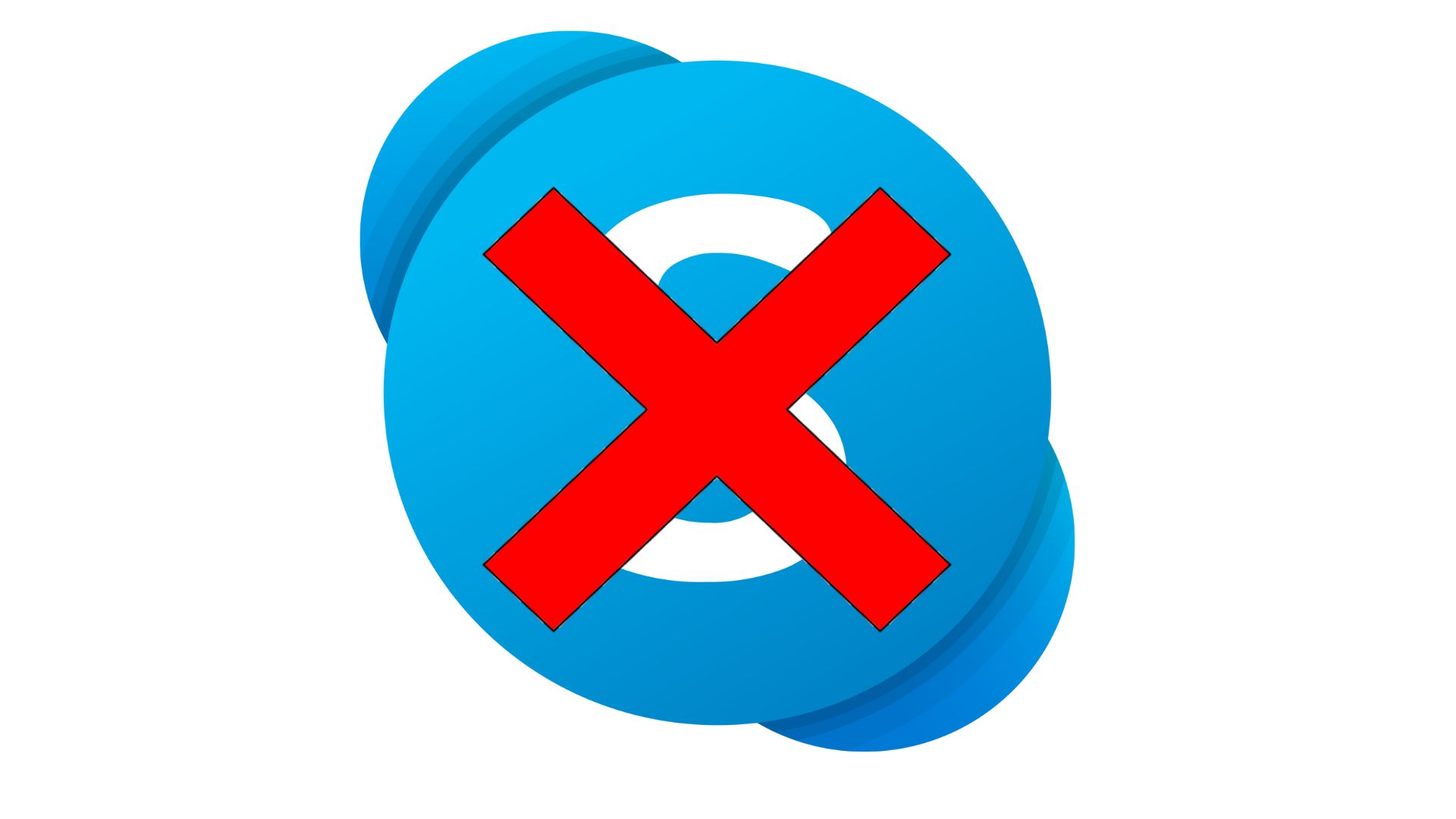
The Most Common Voice Messenger Security Threats and How to Protect Yourself from Them
In the era of widespread digitalization and remote work, voice communicators have become an indispensable tool in everyday communication. However, their popularity also attracts cybercriminals who use various methods to intercept data or disrupt communication. Below we present most common threats related to the use of voice messengers and practical advice on how to protect yourself against them.
Wiretapping and conversation interception
Eavesdropping is one of the most serious threats to voice messenger users. Attackers can exploit unsecure connections to intercept conversations, especially in apps that don’t offer end-to-end encryption (E2EE). For example, Telegram doesn’t use E2EE in group chats by default, which can be a security hole.
How to protect yourself:
• Choose apps that offer E2EE, such as Signal or WhatsApp.
• Avoid using public Wi-Fi networks without proper security.
• Update your apps regularly to benefit from the latest security features.
Man-in-the-middle (MitM) attacks
MitM attacks involve a third party intercepting communications between two parties without their knowledge. The attacker can eavesdrop, modify, or redirect data, which poses a serious threat to the confidentiality of information.
How to protect yourself:
• Use applications and websites with an SSL/TLS certificate (addresses starting with "https").
• Avoid logging in to important services over public Wi-Fi networks.
• Use VPN networks, which encrypt all internet traffic.
Application Security Vulnerabilities Exploited
Cybercriminals often look for loopholes in messaging software that they can use to take control of a device or steal data. An example is a flaw in the SS7 protocol that allowed for eavesdropping on phone calls.
How to protect yourself:
• Update your operating system and applications regularly.
• Use official app stores to avoid malware.
• Install reputable antivirus and antimalware software.
Phishing and social engineering
Phishing is a method of phishing by impersonating trusted individuals or institutions. Attackers can send fake messages that look like official communications, encouraging people to click on malicious links or provide login information.
How to protect yourself:
• Always check email addresses and links before clicking.
• Do not share personal information through unknown communication channels.
• Enable two-factor authentication (2FA) in apps that offer it.
Practical safety tips
Use strong, unique passwords: Avoid simple passwords and do not use the same password across different services.
Enable two-factor authentication (2FA): An additional layer of security makes it difficult for unauthorized people to access.
Update your software regularly: Updates often include security fixes.
Avoid public Wi-Fi networks: If you must use them, use a VPN.
Install antivirus software: Protects against malware and other threats.
Be alert for suspicious messages: Do not open attachments or links from unknown senders.
In summary, security in voice messengers depends on both technology and user awareness. By following the above recommendations, you can significantly reduce the risk of cyber threats and enjoy safe communication.
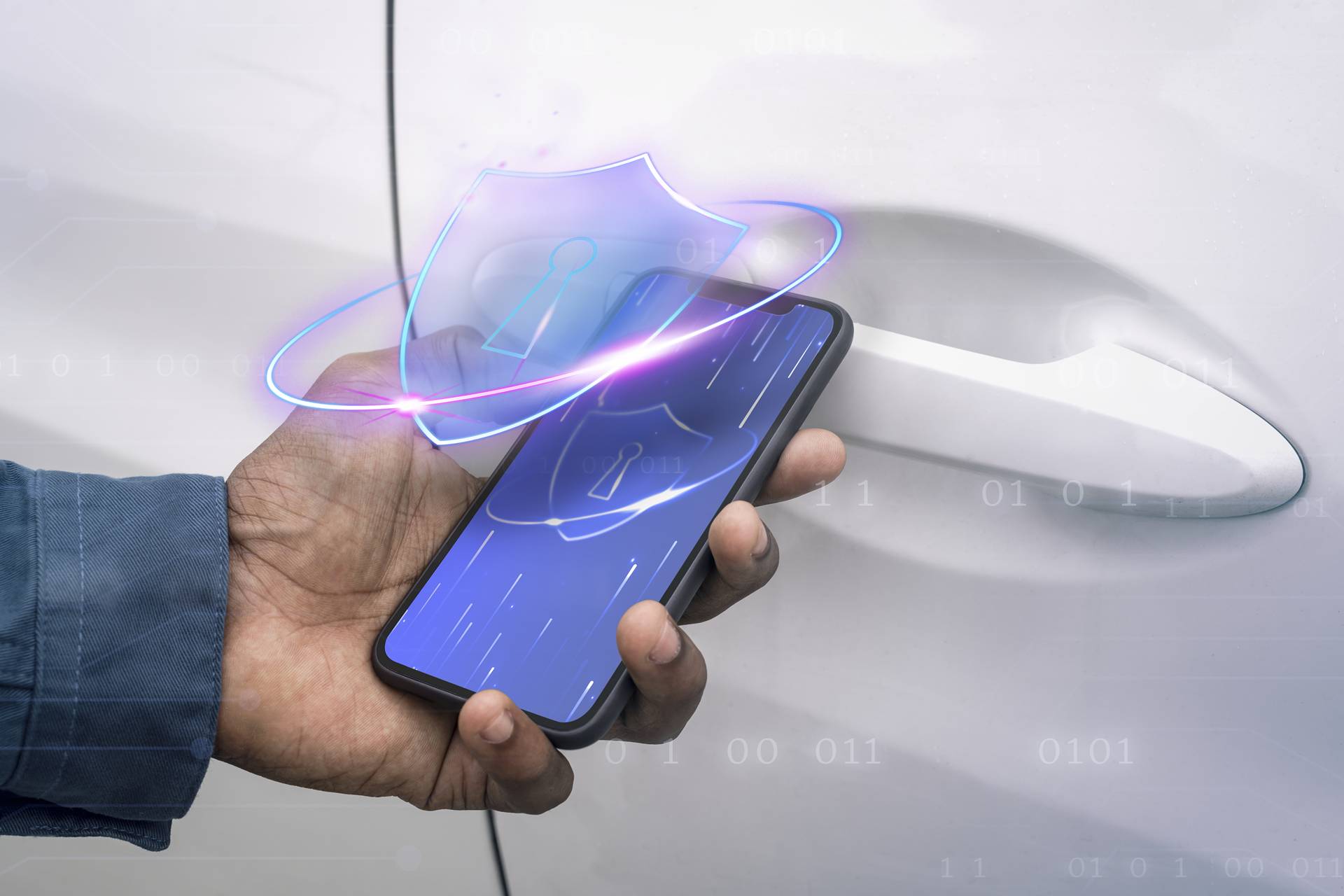
Summary
Choosing the right voice communicator is a key step for any company that cares about data security and effective communication. Among the available solutions, Microsoft Teams stands out as a platform offering advanced security features, regulatory compliance, and integration with the Microsoft 365 ecosystem.
Why Microsoft Teams is a Safe Choice for Businesses
Microsoft Teams provides comprehensive data protection mechanisms:
• Data encryption: Data in transit is protected with TLS, and data at rest is encrypted with BitLocker.
• Multi-factor authentication (MFA): An additional layer of security protects user accounts from unauthorized access.
• Compliance with regulations: Teams meets the requirements of standards such as ISO/IEC 27001, HIPAA and GDPR, which is important for companies operating in regulated sectors.
• Protection against threats: Integration with Microsoft Defender for Office 365 provides protection against phishing, malware, and other cyberthreats.
Training and security policies
Technological security This is just one aspect; user awareness is equally important. Regular cybersecurity training helps employees recognize threats such as phishing and social engineering. It is also worth implementing security policies that define the rules for using instant messaging, storing data, and responding to incidents.
Regular security audits
Constant monitoring and auditing of the communication environment allows for quick detection and response to potential threats. Microsoft Teams offers auditing tools that allow you to track user activity, changes to settings, and access to data. Regular reviews of these logs help maintain a high level of security.
Cooperation with SimpleIT - Your partner in security
Implementing and maintaining a secure communication environment can be a challenge, especially for companies without a dedicated IT team. We offer comprehensive support in:
• Advice on choosing the right communicator: We analyze the needs of your company and recommend the best solutions.
• Microsoft Teams configuration and implementation: We provide a safe and effective working environment.
• Training for employees: We conduct workshops on using Teams and cybersecurity principles.
• Regular audits and monitoring: We keep your security settings up to date and respond to potential threats.
Choosing SimpleIT, you gain a partner who will not only implement the appropriate tools, but also ensure their proper functioning and the security of your company.



